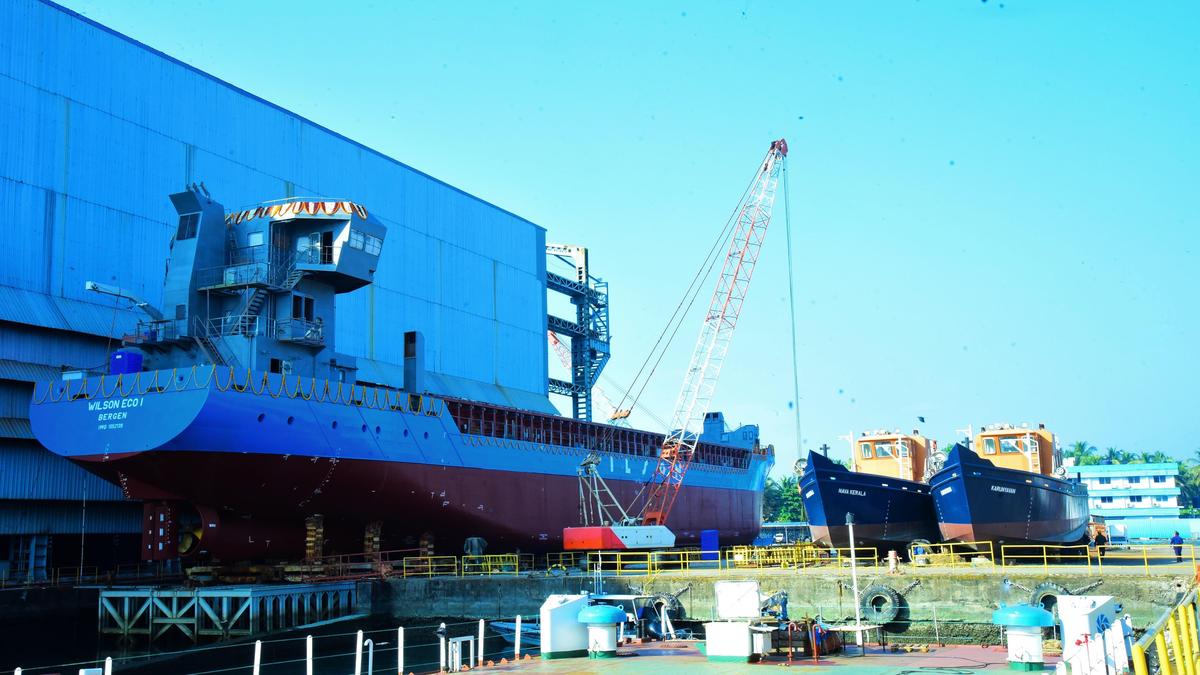In Mumbai for India Maritime Week 2025, I witnessed the buzz of a global industry that has confidently set sail towards a secure, sustainable, and equitable future. Norway has built up a comprehensive maritime cluster of ship designers, equipment manufacturers, shipyards, shipping companies, financial and insurance institutions, and shipbrokers. Representing the country at an event of this scale that covers every link of the maritime value chain is a privilege rife with possibilities.
Charting a common course
For both Norway and India, oceans and coastlines are natural assets. Oceans connect our economies and our people and are at the heart of our bilateral partnership. India plays a vital role in global shipping. It is not only a hub for trade, shipbuilding and ship recycling, but also offers technological and digital capacity.
The entry into force of the India-EFTA Trade and Economic Partnership Agreement (TEPA) on October 1 provides a major boost to the India-Norway partnership. Stronger maritime collaboration is a natural and strategic complement to these shared ambitions. Norwegian Prime Minister Jonas Gahr Støre looks forward to welcoming Prime Minister Narendra Modi to Oslo for the 3rd India-Nordic Summit where we will continue the dialogue on ocean cooperation, among other priorities.
In 2019, both countries came together to establish a formal ocean dialogue and an India-Norway Task Force on Blue Economy to focus on sustainable ocean management, mitigation of marine pollution, and green shipping. At Norway’s flagship maritime event Nor-Shipping held in Oslo this summer, India made a splash with its first-ever India Pavilion, led by the Minister of Ports, Shipping and Waterways Sarbananda Sonowal. India’s participation left a lasting impression with conversations around sustainable growth, green shipping corridors, shipbuilding, digital maritime solutions and leveraging India’s workforce and investment opportunities.
Maritime partners Norway and India have much to contribute to each other, a fact well illustrated by the number of Norwegian companies present in Mumbai for the India Maritime Week. During the event, officials from Norway’s Ministry of Trade, Industry and Fisheries and the Indian Ministry of Ports, Shipping and Waterways met for the 10th Joint Working Group Maritime, discussing green shipping, maritime training and security as well as ship recycling.
As the global shipbuilding market reaches capacity, India’s rapidly growing position as a builder of the global fleet presents exciting opportunities for partnership. Already, about 10% of ships ordered by members of the Norwegian Shipowners’ Association are built in India. Norwegian shipowners have longstanding relationships with Indian yards such as Cochin Shipyard, which recently secured 14 vessel orders from Norway’s Wilson ASA. This is a testament to the trust and quality that Indian yards deliver. India has also been an excellent partner in the development of environmentally sound and safe ship recycling.
Aiming for a sea change
Norway sees India as a key partner on the journey to a sustainable blue economy. Guided by the principle that environmental responsibility and economic growth must go hand in hand, Norway ambitiously aims to reduce emissions from domestic shipping and fisheries by 50% by 2030 compared to 2005 levels.
Our approach to green shipping combines targeted domestic action with strong international engagement. We support stricter international regulations to cut climate gas emissions from shipping, helping build a global market for low- and zero-emission solutions. We strongly supported the adoption of the International Maritime Organization’s Net-Zero Framework, even though consensus has not yet been reached. Over the next year, it is extremely important for member states to unite to ensure this framework becomes a reality.
The green transition in Norway is the result of collaboration between the government, industry, and research institutions. Our maritime sector is exploring new fuels such as ammonia and hydrogen, and Norway has been among the first countries to launch autonomous and fully electric vessels, including the Yara Birkeland, the world’s first zero-emission, autonomous container ship, and ASKO ferries.
Norway is committed to advancing women’s participation in the maritime industry. I was pleased to be part of the constructive dialogue on gender equality and inclusion at the Maritime SheEO Conference, an initiative that Norway has supported since its inception in 2019. It was deeply inspiring to meet Indian women seafarers, cadets, and captains who are shaping the industry’s future.
Indian seafarers are the second largest nationality working aboard Norwegian-controlled vessels. With TEPA, Norway and India have agreed to facilitate on-board training opportunities for our respective seafarers. Even though women are a minority in maritime professions globally, our two countries can make this industry more inclusive and future-ready by sharing best practices.
The Maritime India Vision 2030 and Amrit Kaal 2047 show India’s forward-looking maritime strategy and align with Norway’s vision for sustainable ocean management. Unarguably, this has been one of the biggest years for the maritime partnership between Norway and India. As major ocean nations, we face common challenges, and with them, a shared responsibility to think globally and act for the benefit of all.
Marianne Sivertsen Naess is Norway’s Minister of Fisheries and Ocean Policy
Published – October 30, 2025 01:12 am IST
